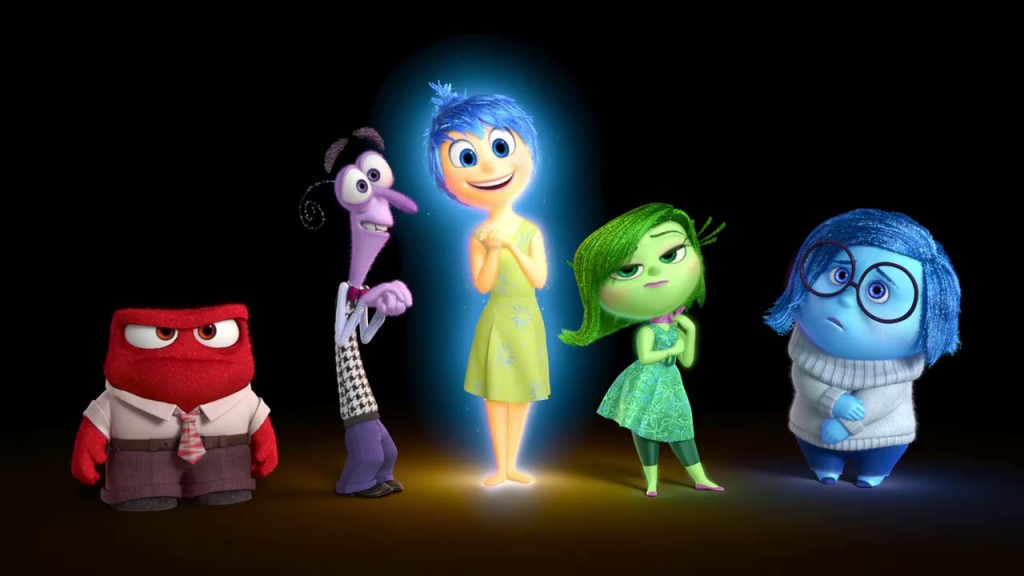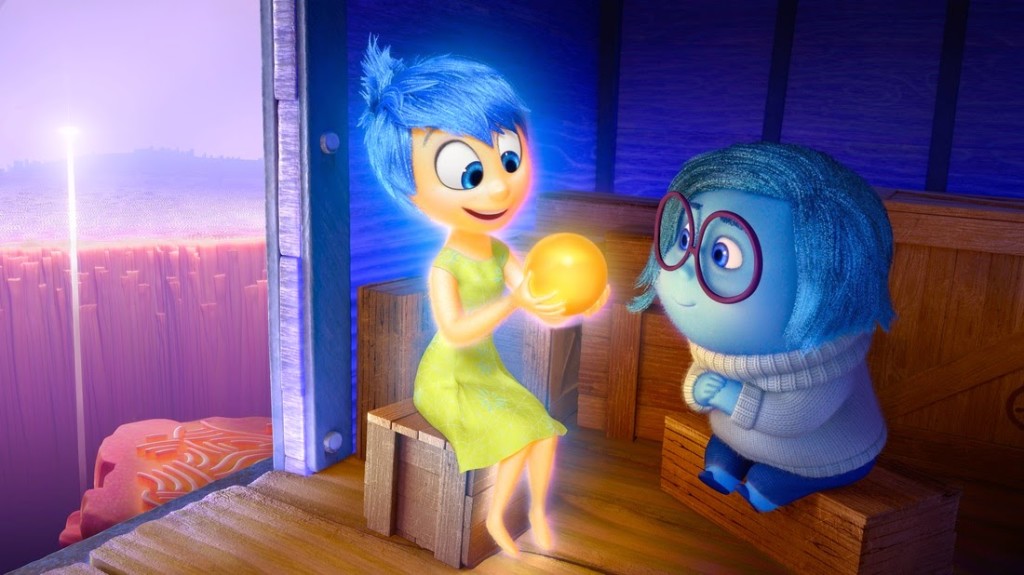Search Results for: F word
The Scriptshadow Newsletter is Out! If you didn’t receive it, check your SPAM and PROMOTIONS folders. It should be there. And it’s a good one. I review the hottest screenplay in town!
Genre: Thriller
Premise: When a newly minted partner at his firm goes to spend the weekend with his old friends, the three of whom own a successful hedge fund, he begins to suspect that they’re involved in some major illegal activity.
About: The 1983 film, The Osterman Weekend, is probably best known for being directed by the legendary Sam Peckinpah, as well as having a stellar cast (Rutger Hauer, John Hurt, Craig T. Nelson, Dennis Hoppper, and Burt Lancaster). It was around 2007 when people first got the idea to remake the film, and since then, it’s gone through a series of rewrites and restarts. The original book was written by Robert Ludlum, who’s best known for birthing the Bourne franchise. This is the most recent known draft and was written by Jesse Wigutow, who’s been doing well for himself lately. He wrote the latest Tron movie before it was cancelled by Disney. And he also wrote the latest Crow film, which we’re being told is coming soon.
Writer: Jesse Wigutow (based on the novel by Robert Ludlum)
Details: 121 pages- 6/12/12 draft
I think it was Steven Soderbergh who once said, “Why do we keep screwing up all these classic movies. If you’re going to remake a film, find one that had a good concept but bad execution.” In other words, find great ideas that they screwed up. And that appears to be the idea with an Osterman Weekend remake, a 1983 film that was loved by, well, nobody.
But I’m a big fan of these types of ideas. Seemingly small films with big concepts at their core – high stakes, the potential for lots of conflict and surprises. A guy stuck in the middle of nowhere with friends who may or may not be planning to kill him? That’s a movie there. In fact, this is the exact type of idea I’d like to see in a Scriptshadow 250 entry. Cheap to shoot but bursting with ideas inside.
Does The Osterman Weekend do its job and improve upon the original? Well, I can’t answer that question because, like the rest of America, I never saw the original. But now that I’ve read the script, I have a better idea of what may have held the film back.
The Osterman Weekend follows 35 year-old John Tanner, a tax attorney who’s just made partner. Tanner’s life is looking up, as in addition to his promotion, he and his wife are planning to have their first child.
Every year, Tanner heads up to an island off the coast of Maine, to join his three best friends – Loewy, Tremayne, and Osterman. The four of them descend back into their frat boy days, drinking, fishing, and generally being idiots. It’s a harmless weekend of rekindling their friendship.
Except this weekend isn’t going to be harmless. Loewy, Tremayne, and Osterman own one of the hottest hedge funds in the country. Their returns have been so incredible, they’ve left competing hedge funds in the dust.
On his way there, Tanner is confronted by a couple of men from Homeland Security, who inform Tanner that his buddies are bad news – they’re stealing money. And they want Tanner to help take them down.
Tanner’s not sure whether to believe this or not, but when the men tell him that Tanner could land in prison if he doesn’t help, he’s forced to wear a wire and collect intelligence on his buddies.
The weekend basically follows Tanner as he tries to extract information from his friends. As the weekend goes on, he learns that his buddies are involved in something far more complicated than simply building an elaborate money scam. And maybe their situation is more sympathetic than his pals at Homeland have made him believe.
Who does Tanner trust? Who does he help? In the end, he’ll have to decide whether to go with what’s best for him and his wife, or go with what’s best for the friends he’s known all his life.
When I heard about The Osterman Weekend, I thought I was going to get a really subtle thriller about a guy who ignorantly shows up at his buddies’ weekend party, only to slowly realize that they were criminals capable of doing something horrible – possibly even killing him. That’s the movie I wanted to see.
Instead, The Osterman Weekend comes at you like a giant hammer, banging its way into your skull. Gone is all hope of subtlety when before we even GET to the weekend spot, we’re already bombarded with two agents who are telling our hero that his friends are evil.
From that point on, I found myself completely distanced from the story. It was just so BIG and IN YOUR FACE. Even the writing screamed at you, with lots of CAPITALIZATION EVERYWEHRE YOU LOOKED.
Doesn’t this story work better if Tanner shows up on this island, thinking he’s in for a fun weekend, and then slowly discovers clues that his friends aren’t who they say they are? That they’re planning to do something horrible? And he has to quietly investigate what that is without them catching on? I think so.
Another frustrating thing about The Osterman Weekend was the lack of hand-holding. Whenever you’re covering a complicated job, or subject matter, or plan, it’s your duty as a writer to hold the hand of the reader and take them through the details so they know what’s going on.
The Osterman Weekend is about law firms and hedge funds, things I know next-to-nothing about. This left me playing “catch up” throughout most of the first act. In fact, since we were talking about hedge funds so much at the start, I thought Tanner worked at a hedge fund. It was only after a later throwaway line that I realized he was a tax attorney.
If the details aren’t important to the story, you can get away with less help. But the hedge fund here is the cornerstone of the plot. So to leave us on our own to interpret it was frustrating at best. Always be mindful of the fact that the reader knows less than you. If you have complicated subject matter, help the reader through it.
Maybe The Osterman Weekend’s biggest problem though – and the reason that despite a legendary director and stellar cast, it didn’t do well – is that it has a main character who doesn’t do anything. He’s just a pawn in the middle of two way more active parties.
It’s preferable you pick stories where your main character is DRIVING THE ACTION. He’s the most active party in the story. Here we have the Homeland Security guys (I’m still not sure why Homeland Security is trying to bust a hedge fund) targeting Osterman. We then have Osterman mounting a complicated escape plan. And Tanner is stuck in the middle, doing whatever people tell him to do. Someone needs him to wear a wire, he wears a wire. His buddies tell him the hedge fund issues aren’t their fault, he believes them.
This has been a debate since the beginning of screenwriting. Can your main character make it through an entire movie without being active? I suppose it’s possible but your audience is always going to respond better when your main character says, “Fuck this, if I’m going down, I’m going down my way.”
I mean look at Ludlum’s most famous series of novels. They revolve around one of the most active characters out there – Jason Bourne.
I think things are different in novels when you’re inside the hero’s head. We get a running commentary on what he’s going through. Therefore, it’s not as evident that he’s inactive. Because there’s all this activity going on in his brain. In movies, it’s different. All we have to go on are a character’s actions. So if they’re simply jumping when other characters tell them to jump, they look weak. And nobody likes a weak hero.
I’d love it if they went back and started from Square 1 here. Make this a slow-build story. Inject some curiosity and suspense into Tanner’s arrival. Make it so that everything seems great before everything falls apart. That was my biggest issue with Osterman. They introduced a problem before we had a chance to settle in and consider that there might be problems. There was no patience here.
[ ] what the hell did I just read?
[x] wasn’t for me
[ ] worth the read
[ ] impressive
[ ] genius
What I learned: Hold the reader’s hand when it comes to complicated subject matter. Tax attorneys? Hedge funds? The average person knows nothing about these things. So make sure you explain them to us, as well as how they fit into the story. If you leave us behind, we’ll mentally check out, and from that point on, we’re unable to enjoy your story.
Quickly, there will be NO AMATEUR FRIDAY POST TOMORROW. There will be Amateur Offerings Saturday morning, but that’s it. The good news is, I’m sending out a Newsletter tomorrow evening. So make sure you sign up to reap all the yummy screenplay-news benefits. Now on to today’s article!
The spec screenplay market has to be one of the most confounding, one of the most confusing, one of those most frustrating, markets in existence. You’d think all you have to do is write something slightly better than the last movie you saw and you’d be able to start cashing checks and put a down payment on that Bel-Air mansion Redfn keeps reminding you about. Yet time after time, aspiring screenwriters come to Hollywood writing multiple screenplays only to leave a couple of years later with their tail between their legs, attributing their failure to buzz words like “nepotism.”
What is the common mistake these screenwriters make that facilitates their failure?
They never learn the system.
In fact, they probably never even knew a system existed. Their understanding of a screenplay sale is based on a New York Times article they read once about a 3 million dollar spec purchase from a writer, the paper implies, who started screenwriting last week. Nowhere is it mentioned that the writer has actually been studying the craft of screenwriting for 15 years, has three previous sales, and has an amazing relationship with the studio he sold the script to that dates back a decade.
To be clear, most scripts sell through some version of this method. The writer will have a prior relationship with the producer/studio and the producer will say, “You know what I’d really like to make right now? A creature feature.” The writer then writes a creature feature with the understanding that, at least with this buyer, he has a good chance of selling it.
But this is not the system you, the unknown screenwriter, take part in. The system you send your scripts into is more like the Wild Wild West. Instead of known entities collaborating on potential projects they want to make, you’re an unknown entity screaming your idea into a void, hoping one of many others in that void hear you and scream back.
Once you understand that this is how the spec market works, you can start weaponzing your script to attack it. The idea is to write the ultimate “spec-friendly” screenplay, a screenplay specifically designed to do well within the unique parameters that make up the spec market. And this brings us to our first spec-friendly rule. If you’re going to yell your idea out in the hopes that someone yells back, you better make sure your idea is really fucking good. So, rule #1:
1) Generate a concept that’s going to excite people.
80% of spec screenwriters either don’t know the importance of this rule or ignore it. But it’s the heartbeat of every spec sale. Your idea has to be exciting. You guys see it every Saturday morning here on Scriptshadow. You gravitate to the bigger ideas, the bigger concepts, while ignoring the ones that sound bland, small, or uninspired.
What’s troubling is that half the writers out there KNOW that their ideas are small and they still write them, convincing themselves that they’re the “one exception.” Guys, we’re trying to arm our scripts here, not cripple them. If you’re not walking into the spec market with a big idea, it’s like walking onto the battlefield without a gun. You might as well just pose in the position you wanna be dead.
Once you’ve convinced someone to read your script based on that awesome idea, you run into a new problem – the Hollywood Reader, a perennially overworked and hard-to-please soul-crushing individual who may or may not drink the blood of failed screenwriters. The large majority of scripts readers read are terrible, so they’re pre-programmed to think that your script is terrible as well, putting you at an extreme disadvantage before they’ve even opened your screenplay.
What’s important to remember about the reader is that reading for him isn’t an enjoyable experience. Reading for him is work he has to complete by the end of the day. You know that work you’re doing right now? That document you have to send off to your boss or that TPS report you need to make copies of? Readers see your scripts the same way you see those TPS reports – they’re obstacles they must finish in order to get to the things they really want to do that day.
This is a major truth that the average screenwriter either doesn’t know or doesn’t want to acknowledge. That the person they’re giving their screenplay to is actually an ADD riddled fellow screenwriter who wants to whip through and cover their script in record time so they can start working on their own screenplay. And it’s this reality that dictates the bulk of the rules in writing spec-friendly screenplays. Here are rules 2-4, which help navigate this admittedly complicated problem.
2) Write a clear easy-to-follow plot. The heavier the plot is, the more sub-plots there are, the more subtle and nuanced the story beats are, the less of a chance your reader will understand what’s going on. With spec screenplays, you want your story to be clear, in your face, and strong. It’s gotta keep your reader awake!
3) A low character count. The more characters you ask the reader to remember, the more your script becomes an exam as opposed to a script. The reader wants to be entertained, not have their memory tested.
4) A sparse writing style. Again, readers are zipping through your screenplays as fast as they can. Big blocky chunks of text (5-7 lines) slow them down and piss them off. Throw enough of these mega-text blocks in there and a reader will get so pissed he’ll start skipping them entirely.
Let’s take yesterday’s script, “The Revenant,” (about a fur-trader who avenges the men who left him to die) to see how spec-friendly it is. It isn’t the best example because it’s a book adaptation and it was developed in cooperation with a production company. However, The Revenant is a pretty spec-friendly premise and here’s why:
– The plot is easy to follow (clear destination, motivation and goal).
– The character count is low (revolves around 3-4 guys).
– It’s a marketable storyline (revenge plot).
Not convinced? Well, imagine The Revenant next to another script about fur trading. In this other script, we follow the evolution of the fur trade between the years of 1770 and 1910, centering on a Navajo family whose fortunes disintegrate over five generations as the commercialization of the trade eventually puts them out of business, leaving them homeless. Do you see how “un-spec-friendly” that is? The story is long, sprawling, complicated, with lots of characters to remember. It sounds like I’m going to need to take notes. I got news for you. If you ever write a script where the reader has to take notes to remember what’s going on, you haven’t written spec-friendly. You’ve written spec-enemy.
One of the unfortunate side-effects of the spec screenplay system is that, due to factors I mentioned above, it favors genres that fit into an “accelerated reading” state. Therefore, slow period pieces don’t do well on the spec market. Nor do straight dramas. Nor do Westerns. Spec-friendly genres are up-tempo. And this leads us to our fifth rule.
5) Write in one of the six “fast” genres: Comedy, Horror, Thriller, Adventure, Sci-fi, Action.
Not only should your genre be fast, but your story itself should be fast. Any time-frame in excess of one month means your story’s probably too slow-moving for your average reader. Remember, this is a guy whose brain is exhausted from constantly reading junk. He could fall asleep at any moment. So the story most likely to keep him up is the one that’s taking place quickly, the one that’s moving along FAST. Look at some of the recent spec sales. Parents Weekend (about parents who party at their son’s college for one weekend), The Babysitter (about a kid who gets stuck one night with a psycho crazy babysitter), In The Deep (about a girl stuck on a buoy being hunted by a shark). So, rule #6
6) Keep the timeline of your script as short as possible. Under a week is good, but under 72 hours is better.
Finally, in order to write that perfect spec-friendly screenplay, you have to be aware of this simple reality: studios want to make money. The readers are reading for the producers who are producing material for the studios, who are trying to do one thing: Make movies that make as much money as possible. To that end, your spec needs to cover one of the 20 proven subject matters that Hollywood makes money on.
7) Write in one of Hollywood’s 20 proven subject matters. These include:
A. Superheroes
B. Monsters
C. Dinosaurs
D. Pirates
E. Cars
F. Aliens
G. Dystopian Future
H. Apocalyptic Future
I. End of the world/mass destruction
J. Adventure (Indiana Jones, Goonies)
K. Time travel
L. Robots
M. Secret agents
N. Large scale action (Mission Impossible)
O. Large scale sci-fi (Gravity, Star Trek)
P. Fantasy (Lord of the Rings)
Q. Fairy tales
R. Magic
S. Creatures (Vampires, Ghosts, Werewolves, Witches)
T. Sci-fi Fantasy (Guardians, Star Wars)
Look, I know the system is flawed. It isn’t set up to find the best scripts. It’s set up to find easy-to-market high concept screenplays that move quickly and are easy to understand. This is a direct result of the Hollywood Reader system that’s been put in place. But you can either bitch and complain about that and continue to write your epic multi-century fur trading opus that you’re pretty sure is going to be 3% better once you add that knitting accident on page 147, or you can arm your script to excel in this system. You can write the “spec-friendly” screenplay. If I were you, I’d do the latter.
Genre: Drama/Period/Thriller
Premise: Set in the early 19th century, a group of fur traders leave one of their own to die after he gets injured. Unfortunately for them, he survives, and he’s got vengeance on his mind.
About: You may not have heard of The Revenant yet, but you will. The movie is poised to win so many Oscars, they might as well let everyone involved produce that night’s show. It’s directed by the guy who did Birdman. It stars Leonardo DiCaprio. It co-stars Leo’s best bud, Tom Hardy. It’s also got one of the hottest actors in England, Ex Machina and Star Wars 7 star Domhnall Gleeson. Throw in one of the hippest young actors around, Will Poulter, and this thing bleeds Oscar juice. The script has been in development at Leo’s company for a long time. This draft was written by Mark L. Smith in 2007. However, Inarritu did a director’s pass on it before shooting (and is actually taking a screenplay credit). Also, they’ve changed the ethnicity of the main character, Hugh Glass, from African-American to white, so that Leo can play him. Don’t worry though. As far as I can tell, this isn’t a Rachel Dolezal situation.
Writer: Mark L. Smith (based on the novel by Michael Punke)
Details: 104 pages
I’ve heard so many great things about this script, I’ve needed to open an Excel spreadsheet to keep track of the compliments. Over ten members of the Scriptshadow Community have checked it out. Seven of them told me it was great. Two liked it. And only one actively disliked it.
Even with those expectations, I came out of this one shaking. I don’t know if this is an acceptable way to describe a period piece. But basically, The Revenant is Gravity set in 1820. Confused? Read on.
It’s 1820, Missouri. Fur trading was the Uber of the time, and we’re following a group of fur traders down the river when they’re attacked by a particularly nasty tribe of Indians known as the Arikara.
Half the traders are killed and it would’ve been more had Hugh Glass, a badass navigator, not beaten some Arikara ass. Glass ends up saving two men in particular, the mentally unstable John Fitzgerald and eager young buck, Jim Bridger.
After they’ve escaped, in a freak attack, Glass gets pummeled by a bear that practically rips his face off. He kills the bear somehow (He kills a fucking bear!), but it leaves him a barely recognizable twisted mass of blood and guts. Somehow, the captain of the operation stitches Glass up, but he can barely breathe, much less move.
The traders wait for Glass to die so they can continue on, but Glass is a fighter. He will – not – die. The Captain eventually convinces Fitzgerald and Bridger to watch over Glass while they get help from the nearest outpost. But Fitzgerald gets bored and convinces Bridger to leave Glass to die. He’s barely clinging to death anyway. It’s not like he’s going to live through this.
But Glass somehow lives through this. A man who can’t even move somehow figures out how to feed himself (eating grass), drink (he rolls into a marsh), travel (he crawls onto a floating log in the river), fix the hole in his throat (he burns it closed with gun powder).
He survives rattlesnakes, gangrene, waterfalls, boulders at the bottom of waterfalls, maggots eating away at his open wounds, Vultures who eat him alive, racism, and multiple attacks from Indians. Glass can’t go a step without something attacking him. And somehow, he survives it all.
All so he can find the men who left him to die – the men he will not rest until he kills.
There’s this show I used to watch called “I Survived.” It’s a brilliantly simple concept. People who survived all sorts of crazy shit are interviewed about their experience. They take you through their story step by step, reliving the impossible way in which they cheated death.
In this show, you hear about people who survived F5 tornados, mountain lion attacks, having their arms ripped off by farming machines, airplane crashes, house fires. But all of these stories would pale in comparison if Hugh Glass told his story.
I mean this guy’s survival skills are insane. There’s this scene early on, after he’s been left, where he’s trying to move five feet. Just FIVE FEET. And all he has is a gimp arm and a barely-operational leg. And he’s just SLIDING, millimeter by millimeter, forward.
Or later, when he finally gets to water, he desperately tries to take a drink, only to watch the water leak out of the hole in his throat left from the bear attack. So what does he do? HE LIGHTS HIS NECK ON FIRE AND BURNS THE HOLE CLOSED. That’s when I realized I was onboard for the full trip on this one. Any character who does THAT to survive, I want to see what he’s gonna do next.
You see, not enough writers write characters that you want to ROOT FOR. They write characters who are mean or dumb or apathetic or boring and expect us to be like, “Yeah! What’s going to happen next!”
You know the guy I want to follow? The guy who wants to live so badly, he will snort out snot and blood to crawl five feet in 60 minutes. That’s the guy I want to follow. The guy who WANTS TO SURVIVE. The guy who WILL KEEP FIGHTING UNTIL HIS LAST BREATH.
The Revenant also taught me that if you want to make a character likable, do so THROUGH HIS ACTIONS as opposed to THROUGH HIS WORDS. For example, I see a lot of writers who say, “Okay, what can I have my hero say so that he’ll be likable?” And they’ll try to make him funny. Or they’ll have him compliment other characters. Or they’ll try to give him a “magnetic” personality.
And it’s not like those things don’t work if done right. But if you REALLY want to make a character likeable, do it through his actions. When the Arikara attacked, Glass was one of the only traders SAVING OTHERS. He was one of the only guys unafraid of the moment. His bravery saved lives, and THAT made him likable. Then later on, when he’s clinging for life, he KEEPS FIGHTING. Audiences admire that. They like people who fight.
Moving on, one of the best ways to make a script spec-friendly is to give your characters a PHYSICAL DESTINATION they’re headed to. Here, the traders are headed to an outpost. Even after they leave Glass, we know Glass is headed to that same outpost so he can kill the men who left him.
The reason physical destinations work so well is because the audience is never confused. I read so many amateur screenplays where I have no idea what’s going on because characters are just running into each other and babbling about who knows what. When you have a “physical destination” story, your reader will never be confused. He knows exactly what your hero is trying to do and this trick keeps the story on point. Not to say it’s the only way to write a script. But if you have this, you have a huge advantage in the clarity department.
The only reason I’m not assigning The Revenant an “Impressive” is because of Glass’s motivation. He wants to avenge these two guys who left him. But the thing is, they actually had good reason to leave him. They were in dangerous Indian territory and Glass was barely clinging to life. Any doctor in the world would’ve told you he had a .000001% chance of surviving. And they barely even knew Glass. It’s not like they were best friends. So to leave him made sense on some level. And you’d think Glass would understand that.
I mean, contrast this motivation with the motivation in The Brigands of Rattleborge. The bad guy had raped and killed the hero’s wife. THAT’S something you avenge. It’s a seemingly small detail but if you’re going to base an entire story around revenge, you want the matter that the character is avenging to be as intense as possible.
Still, holy shit. This was an awesome story. And proof that if you write an awesome character (the “never give up” Glass), A-list actors will want to play the part. Hell, they’ll even make you change the character’s ethnicity to play the part.
[ ] what the hell did I just read?
[ ] wasn’t for me
[xx] worth the read
[ ] impressive
[ ] genius
What I learned: “Physical destination” stories work particularly well as scripts because the reader is never confused about what’s going on. There’s a comfort and a clarity in knowing exactly where our hero is headed.
How did a TV pilot about incest, drug addiction, and imprisonment lead to today’s writer getting Pixar’s “Inside Out” assignment? Read on to find out!
Genre: TV Pilot – Drama
Premise: We follow a group of adults in various stages of arrested development, highlighted by a strange man who’s secretly imprisoning his wife.
About: So you know that mega-hit from this past weekend, Inside Out? Well, it wasn’t just Docter who wrote it. One of the writers was Meg LeFauve. How did a relatively unknown writer score a writing gig on one of Pixar’s biggest movies? This pilot is how. Just goes to show that if you write something good, it might not sell, but it can open a lot of doors for you. “Girl in a Box” is said to have been LOVED by Disney and Pixar CCO, John Lasseter.
Writer: Meg LeFauve
Details: 66 pages
What I love most about this success story is that Meg LeFauve’s pilot about the terrors beneath the surface of our everyday lives couldn’t have been further from a children’s movie about animated emotions. Then why was she chosen for Inside Out? It’s because this industry celebrates one skill above all others – character development.
If you can write convincing interesting characters, you can do it in any genre. Sci-fi, Western, Drama, Comedy, Adventure, it doesn’t matter. Character creation is about finding the truth of the character, giving them unresolved issues in both their exterior and interior lives, and then throwing a bunch of shit at them and seeing how they react. To this end, Girl in a Box is a terrifying delight. With emphasis on “terrifying.”
Our seemingly unrelated cast of characters begins with Jane, a sort of zoned-out 24 year-old beauty who’s just moved into the neighborhood. When we meet her and her older, socially awkward husband, Frank, the two have crashed neighbor, John’s, home, so that Frank can find some clients for his one-man computer business.
It becomes clear to us that something’s off about Jane. She seems eternally zoned out. But that doesn’t stop John, who’s a few months away from marrying his wife, from flirting with her. Despite Jane’s beauty, flirting seems to be a new experience for her, but one she cannot reciprocate for long. There’s fear in the back of Jane’s eyes. That much is clear.
You see, Frank is imprisoning Jane. He keeps her in a box at night, and controls her every move. How long this has been going on, we can only guess.
Meanwhile, across town, we’ve got 20-something drug-addict Dara, who’s just moved back into town. Dara needs a place to shack up while she gets sober and hits up her cousin, Michael, a local attorney with a big future ahead of him. The two seem to have some kind of weird chemistry together, and we can tell that he’d never say no to her.
We also learn that when Dara was young, she snuck out at night when she was supposed to be babysitting Michael’s sister, Casey. While partying with her friends, Casey walked off and that was the last anyone ever saw of her. Needless to say, Dara’s never been forgiven from either Michael’s side of the family or her own. Which has only pushed her into using more.
Towards the end of the pilot, we figure out what’s going on. Jane, the girl in the box, is Casey. And neither Dara or Michael realize that their sister/cousin is only a few blocks away from where they live. Will they ever figure this out? And will Jane, who’s finally building up the courage to take chances, find a way out of this prison she’s lived in since she was a little girl?
The first thing that popped out at me about Girl in a Box was LeFauve’s VOICE. The writing here was stronger than the writing I’ve been seeing lately. And you don’t realize how plain writing is until something comes along that’s better. LeFauve’s stuff is better and it’s because her words and her choices have more life to them.
For example, when we first meet Jane, we hop inside of her POV. And the world becomes FLATTER, less colorful, because Jane’s entire life has been a nightmare. She hasn’t lived a minute of freedom in 20 years. So naturally, she’s going to see the world differently. That was clever.
And there were little things – breadcrumbs almost – to keep you turning the pages. Like when Jane goes to the bathroom at this party and slips one of the pretty seashell-shaped bars of soap into her pocket. We’re curious. Why would she do that? We want to know more about this girl.
The conversations between characters didn’t have that nailed down stiff feeling to them I read in a lot of scripts/pilots either. There was an electricity floating just beneath the dialogue. Like when John meets Jane out in the garden.
John is out there hiding from his fiancé and her mother. So right away, the scene’s got some charge to it. We’re not standing in the middle of a room full of people boringly sharing backstory. John’s got a secret and since we just saw Jane steal that bar of soap, we know she’s got a secret too. This is how you bring a conversation to life.
And it’s also because these characters are so distinct. Creating distinct characters takes a long time for screenwriters to learn. The problem is that you’re only one mind as a writer. So even though you’re switching back and forth between characters on the page, you’re still staying in your own brain.
This is why a common criticism a lot of new screenwriters get when people read their screenplay is: “All your characters sound the same.”
When creating characters, you have to define something unique about them, a dominant trait that makes them stand out. You do this for everyone and now, when you shift between characters, your mind shifts into that trait, allowing you to “speak” from a different perspective.
And we see that here. Jane is detached. Frank is socially awkward and creepy. Dara is mischievous. Michael is the golden boy trying desperately to live up to his reputation. There’s very little overlap in any personality traits here, which is another thing that helps each character feel like their own person.
This all might sound obvious to you. I can hear writers saying, “Duh, that’s what you do. You make characters different.” And yet time and time again when I read amateur scripts, the characters are laughably undefined. Either writers try to make them too complex, giving them so many traits that you don’t know which one defines them. Or they haven’t defined their characters at all, assuming you’ll get a “feel” for them because they, the writer, have a “feel” for them.
If you’re selling your characters on a “vague feeling,” I got news for you. Your characters suck.
Any time you read a script and each character in that script feels DIFFERENT, you know you’re reading someone who knows what they’re doing. Because most writers either don’t put the effort into making their characters unique, don’t think it’s important, or don’t know how. If you can nail character creation – if you can write 5 or more distinct characters that all feel like individual people – that’s when companies like Pixar start calling you.
[ ] what the hell did I just read?
[ ] wasn’t for me
[xx] worth the read
[ ] impressive
[ ] genius
What I learned: This is a really easy way to improve your character creation. Go through every character in your screenplay and assign them ONE DOMINANT TRAIT. Then make sure you hit on that trait over and over again. Han Solo – He’s a cocky motherfucker. Claire from Jurassic World – all she cares about is work. Anna from Frozen – she’s a goofball. Amy from Gone Girl. She was vindictive. The character will evolve out from that dominant trait to have a number of secondary traits. But you need that dominant trait as an anchor. That’s the trait the reader needs to identify that character.
Pixar continues to make a laughingstock out of the competition with its storytelling skillz.
Genre: Animation Drama/Comedy
Premise: We follow the physical embodiment of an 11 year-old girl’s emotions as her family makes the move from Minnesota to San Francisco.
About: Inside Out may not have taken down Chris Pratt and his dino-pals this weekend, but the animated feature did score a 91 million dollar take, making it the highest grossing original idea… EVER.
Writers: Meg LeFauve & Josh Cooley and Pete Docter (story by Pete Docter and Ronaldo Del Carmen)
Details: 94 minutes
One of the reasons Pixar is so successful is that they take chances. Unlike Disney or Dreamworks or Fox Animation, their first thought when coming up with an idea isn’t, “How many toys will it sell?” It’s “How can we write a great story that’s going to move people?” We’re talking about the company that brought the world an 80 year-old protagonist whose wife just died here.
Pixar also puts a ton of stock into feedback. They don’t follow the traditional model of “auteur Russian roulette” which offers a big ego-centric director carte blanche over their movie and whatever he comes up with, he comes up with.
Each draft of a Pixar screenplay is heavily scrutinized by the Pixar brain trust. If something’s not working, they’re going to tell you. And it’s one of the reasons the company has such a good track record. Their screenplays have been put through the ringer.
Inside Out is easily the most ambitious idea Pixar has ever had. Instead of featuring the go-to character groups of humans or animals, Pixar’s replaced them with things that don’t even exist. The movie doesn’t even take place in a realistic environment. It takes place inside someone’s mind, requiring the writers to create an entire new world with a new set of rules.
You’ve never seen anything like it and, outside of its impending sequels, will never see anything like it again. Nobody else would’ve had the balls to make this movie, and that alone is reason to take a closer look.
Inside Out is about an 11 year-old girl, Riley. Well, sorta. That’s another thing about Inside Out. Its main character isn’t really its main character. Its true main character is Joy, the feeling at the center of Riley’s brain. Joy isn’t the only feeling in this control center. There’s Sadness, Fear, Anger, and Disgust. This 5-thing group are in charge of making Riley go.
That group meets its most difficult challenge yet when the family unexpectedly moves from the quaint confines of rural Minnesota to the urban closet of San Francisco. Riley loses all her friends and her dearest love, hockey, and it’s up to Joy to keep the group together. For Joy has one goal and one goal only, to keep Riley as happy as possible.
This is where we’re introduced to the biggest risk of all in Inside Out, its mega-complex inner brain workings. There’s a lot going on here but the basic breakdown is that whenever Riley records a memory, it rolls into her “file system” in the form of a sphere that is color-coded based on the emotion associated with it. Joy is yellow, so happy memories come in yellow. Sadness is blue, so sad memories come in blue. Etc., etc.
Riley also has a series of “personality islands” inside her brain, each represented by a physical island we can see. There’s Goofball Island, Hockey Island, Family Island. When Riley acts like a monkey for no reason, for example, Goofball Island lights up excitedly.
Inside Out is about what happens when Riley’s core memories (another rule-set within the mind – basically the most important memories) start turning blue, which has never happened before. When Joy tries to fix this, her and Sadness accidentally get sucked into Riley’s long-term memory (think a never-ending stack of spheres), and must find a way back to the control center.
In the meantime, with only anger, disgust, and fear to guide her, Riley decides that she hates San Francisco and wants to go back to Minnesota. So she secretly buys a bus ticket and sneaks away to the bus station. It’ll be up to Joy (and Sadness) to get back to the control center in time to stop Riley from getting on that bus. The question is, how far will Joy go to save Riley? Will she ditch Sadness? And is eliminating sadness a good thing?
I went into a more detailed breakdown of today’s plot for a reason. This was a HUGE risk taken by Pete Docter and the crew at Pixar. While breaking storytelling rules often hurts a screenplay, it’s how you break the rules that makes your script unique, that differentiates it from everything else. So for that reason, rule-breaking empowers you.
I have no doubt that 99% of the executives outside of Inside Out would’ve told Docter that his screenplay contained too much exposition. It was like the anti-Mad Max: Fury Road (TLDR – George Miller avoids exposition at all costs). There are different emotions, multi-colored sphere memories, core memories, “islands” inside the brain.
I’m not exaggerating when I say that your average contest-reader would’ve laughed Inside Out out of the contest. The first 20 minutes of the movie are dedicated to our characters explaining how the brain works.
So why doesn’t this sink Inside Out? There are a couple of reasons. Those who have read my book may remember my rule for exposition in regards to The Matrix. The Matrix’s huge exposition centric sequence works because the thing that our characters expose is fascinating. The world we’re learning about is cool. And audiences are more open to accepting exposition when they’re rewarded with cool stuff.
Riley’s inner workings aren’t as cool as the secret of the Matrix. But they are pretty fascinating in their own right. I found myself curious how all this memory storage worked and while there was definitely a lot to keep track of, most of it was pretty neat. Where exposition kills your script is when it’s boring. When it’s not fascinating but rather feels like a test – like you’re being asked to remember a set of facts for later.
The second thing is that Inside Out has an “exposition friendly” character explaining how everything works. Exposition-friendly characters are characters who dole out information naturally. It all feels very obvious that this character would be explaining this stuff to us. Joy, who’s been working Riley’s controls for 11 years now, feels like the perfect guide in this scenario. Her telling us what’s going on makes sense.
This wouldn’t have worked as well had you added, say, an invisible narrator – someone whose sole purpose was to dole out exposition. This is the kind of thing that angered moviegoers in films like Blade Runner. Sure, our narrator was our hero, but conveying facts so people knew what he was doing didn’t sound like something that particular character would do. It felt unnatural.
Or, had Docter introduced, say, a therapist for Riley and tried to have the therapist be our window into how the mind worked. Can you imagine trying to fit all the relevant Inside Out exposition into a few therapy scenes? (“So you see, Riley, you have all these different emotions when you live your day-to-day life. There’s ‘Anger,’ there’s ‘Joy,’ there’s, ‘Sadness.’”) .
The point is, readers/viewers sense when you’re struggling to come up with a way to push exposition on them. If you can find an “exposition friendly” character to do that work for you (Ferris Bueller, for example), the exposition will come off invisibly as opposed to obviously. Exposition-heavy movies like Inside Out practically require you to come up with an exposition-friendly character.
One of the mantras I find myself offering more and more to writers when I give them notes is Pixar’s golden screenplay rule: “Simple story, complex characters.” 5 of the last 6 scripts I gave notes on fell into the “Complex story, complex characters” department. For whatever reason, new writers feel that it’s imperative they make their story as complex as possible.
A cursory glance at Inside Out might lead you to the conclusion that this story is complex as well. Like I pointed out, the thing has all these darn rules. In addition to having the control room, you have these islands in Riley’s head, long-term memory, abstract thought, daydreams and nightmares, the fact that we’re cutting between Riley’s brain and Riley’s life all the time.
But I want you to take a step back to see just how simple the story behind Inside Out is. The entire movie takes place in under 72 hours (it might be a little longer, but 72 hours is a good guess). Riley gets to San Francisco Day 1, hates school Day 2, and decides to go back to Minnesota on Day 3.
Then, inside Riley’s brain, we have a very simple GSU model pushing the story forward. The GOAL is for Joy to get back to the control center. The STAKES are the dangers of Riley heading out into the world on her own. And the URGENCY is that the bus leaves in a few hours. If Joy (and Sadness) don’t get to the control center quickly, Riley will be off to Minnesota.
I can’t stress the importance of this choice enough. Docter and the Pixar Crew realized that they were already asking a ton from their audience to sit through this very complex explanation of how the brain works. They knew if they then came up with some super complex storyline that lasted six months or something, it would’ve been too much for the audience to handle.
And I commend them for that because one viewing of Inside Out and you can tell they wanted this to be a lot bigger. This was originally meant to be a film about a girl entering puberty and all the complex emotions that come along with it and how do you deal with those emotions. But it looks like the Pixar Brain trust made Docter aware that if he went down that road, he was going to be biting off more than he could chew.
I have no doubt the subsequent drafts kept simplifying the storyline, cutting the timeline down again and again until it was only a few days long. And this led to the only real “knock” against Inside Out, which is that the physical character of Riley doesn’t go through all that much.
Since we only have a couple of days with her, her emotional breakdown is bare-bones. She kind of pouts and then decides to go back to Minnesota. But this was the right choice and it’s one of the hardest things about writing screenplays – is recognizing when your story is too ambitious for the medium and that you have to dial it back to make it work.
And that’s the reason Pixar is so good at what they do. They recognize these things and make the relevant changes so that the story works.
[ ] what the hell did I just watch?
[ ] wasn’t for me
[ ] worth the price of admission
[x] Arclight prices impressive
[ ] genius
What I learned: For a new writer, this has to be confusing. You read about Mad Max: Fury Road, and the celebration behind its minimalist exposition. Then you hear about Inside Out, which has more exposition in it than all of the Harry Potter films combined. Which one is right? Neither. Every story has its own exposition requirements. It’s something that should be taken into consideration before every movie you write. “Is this going to be an exposition challenge?” If you come up with an idea that requires a ton of exposition, then you better have a plan for how to include that exposition that doesn’t grind your screenplay to a halt. However, once you commit to an idea, commit to its exposition. If something requires a lot of exposition and you try to pull a George Miller: Fury Road (boil 15 pages of exposition into 1), you’re going to have a lot of confused readers because you’ve excluded a ton of information required to understand the story. A script’s exposition requirements are a script’s exposition requirements. Minimize as much as you can, but make sure to include every piece of info the audience needs to understand the story. You can see the value of that approach here in Inside Out.










